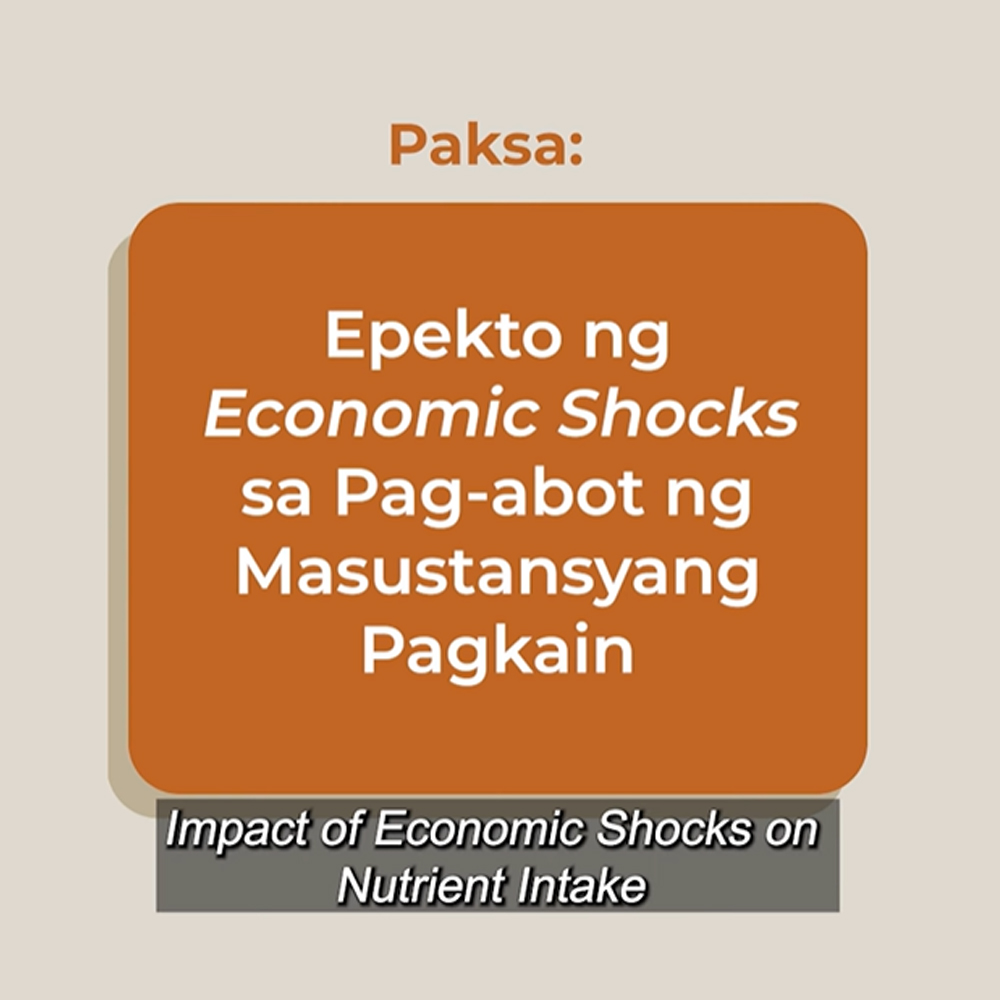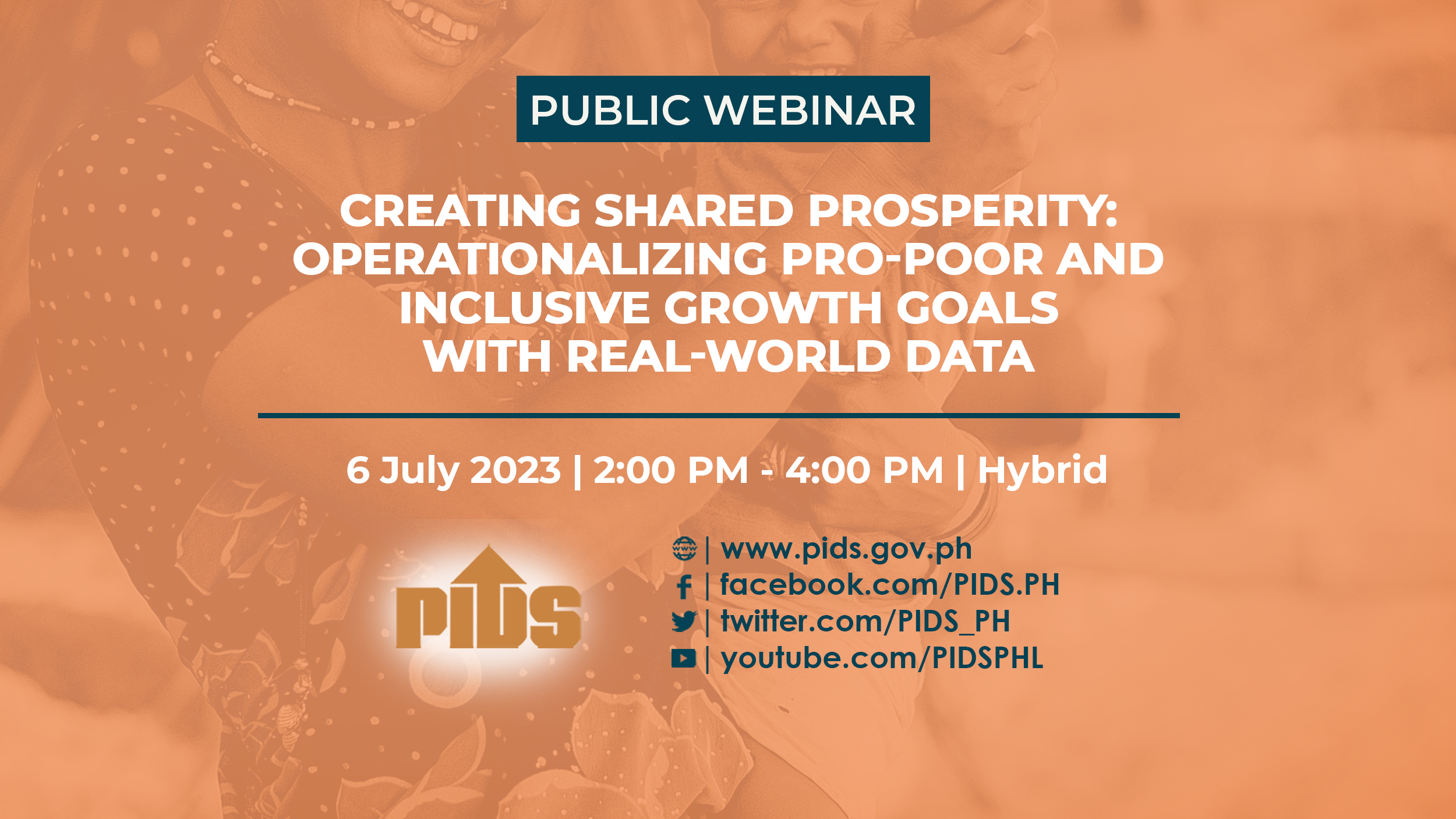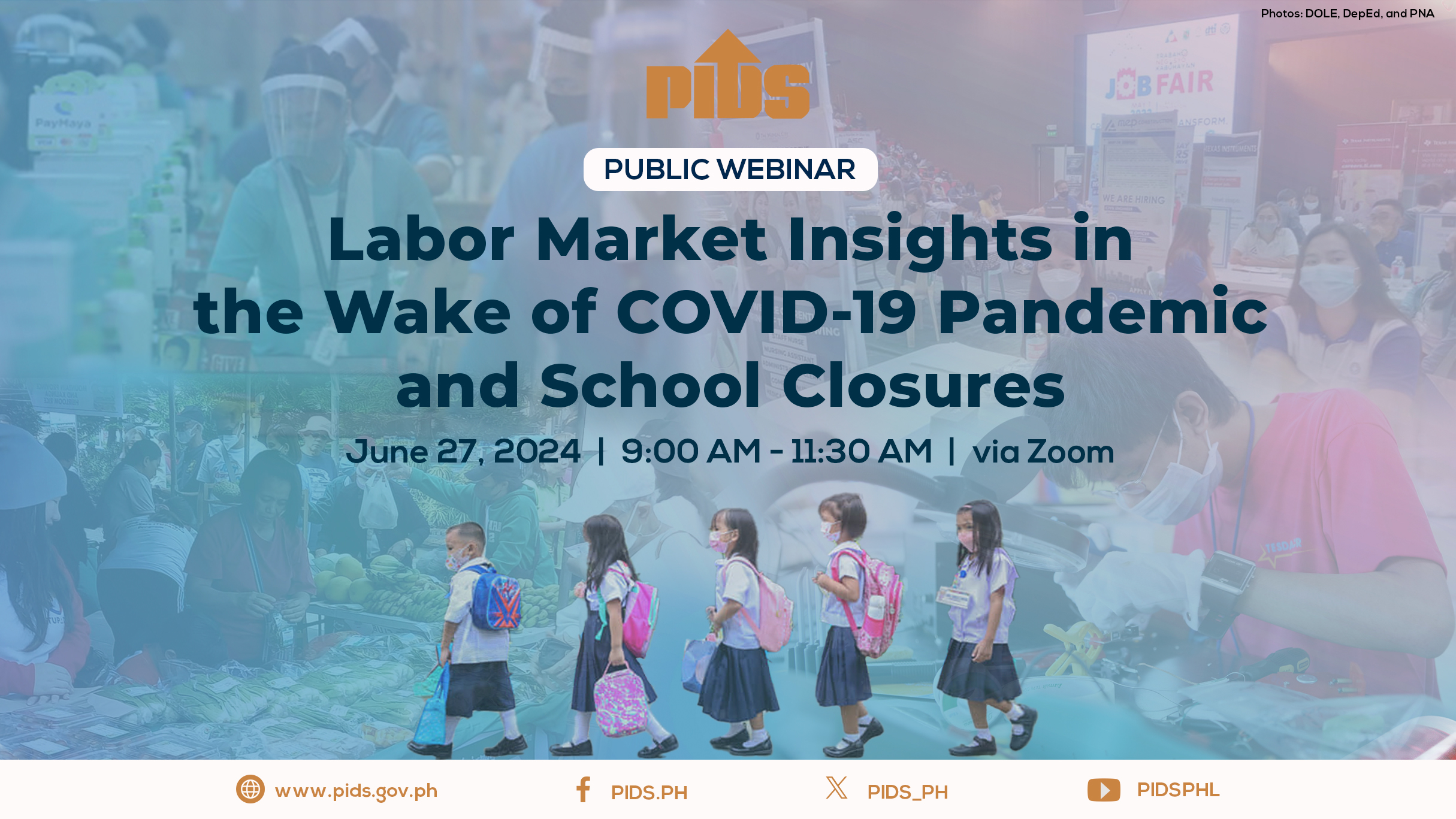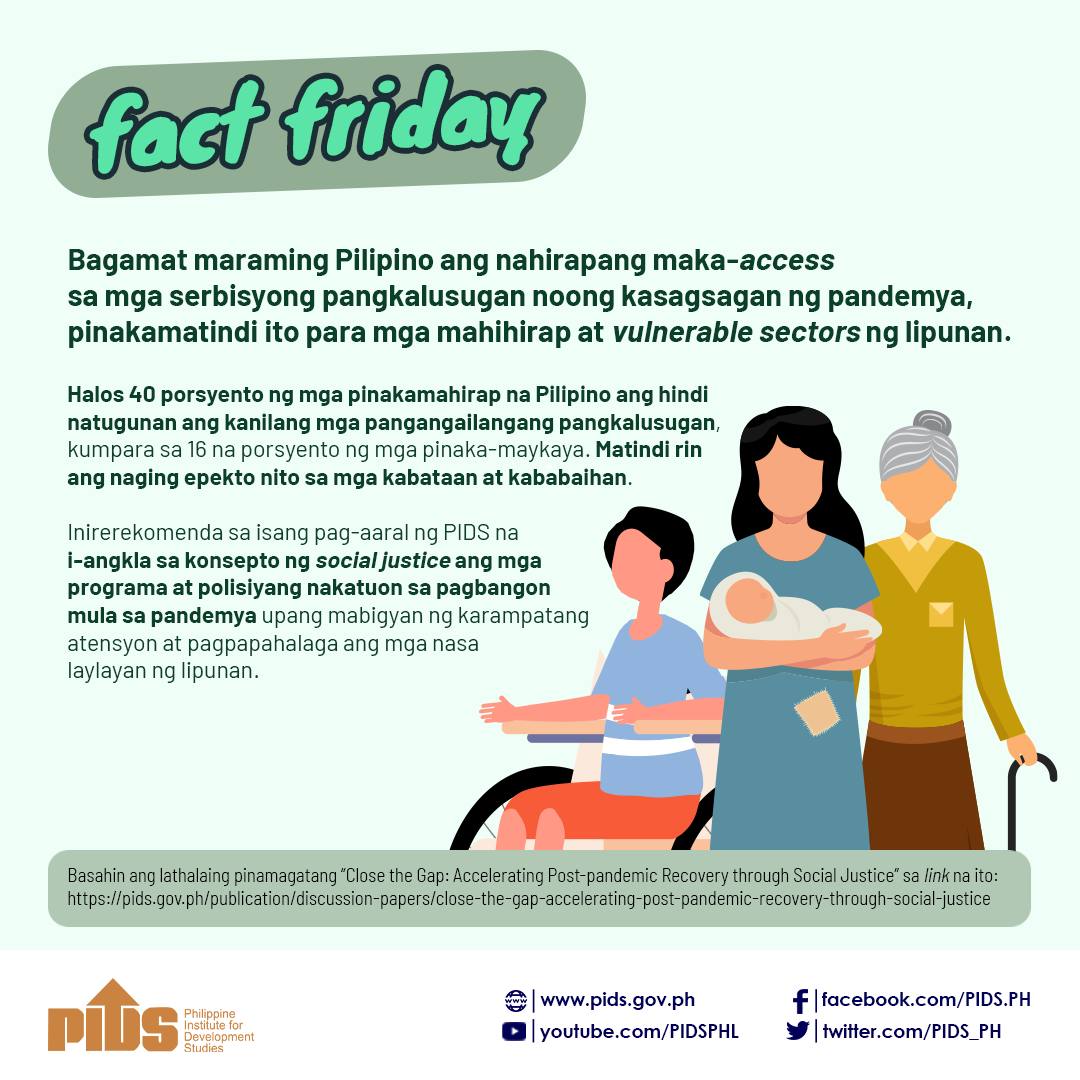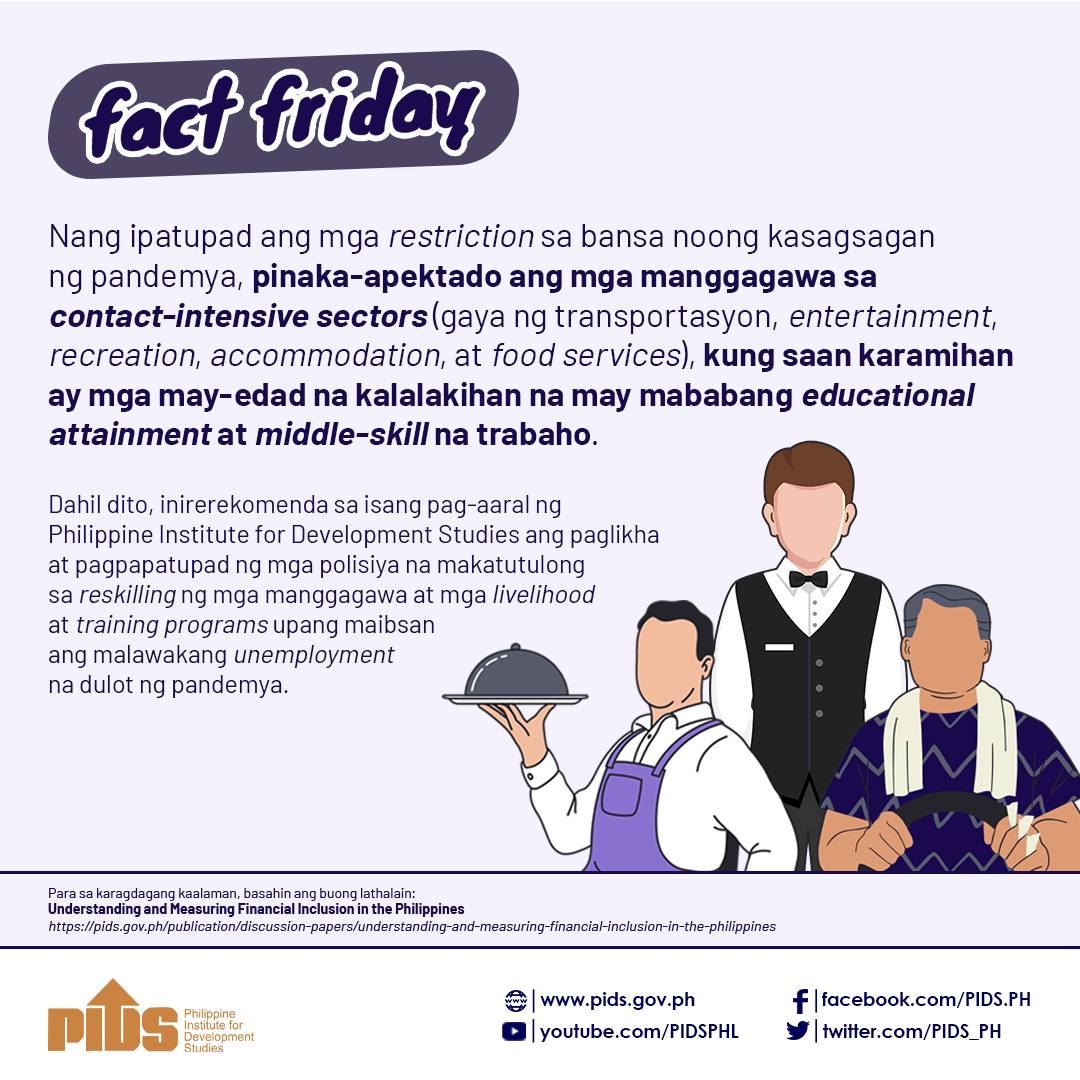A million-and-a-half Filipinos could fall into poverty because of the pandemic, according to a discussion paper titled “Poverty, the Middle Class, and Income Distribution amid COVID-19,” co-authored by Dr. Jose Ramon G. Albert, a senior research fellow at the Philippine Institute for Development Studies.
In this study, a million-and-a-half Filipinos creating a new kind of poor is neither the best- nor worst-case scenario. It’s midway, where income declines by 10%.
Mr. Albert explains the simulations and scenarios he and his co-authors ran to arrive at their numbers. He tells BusinessWorld reporter Beatrice M. Laforga that the government’s emergency subsidy programs minimized the pandemic’s impact on poverty. Without financial aid, he said, 5.5 million Filipinos could have been pushed into poverty.
TAKEAWAYS
Economic recovery depends on the government’s ability to promote the proper environment for businesses to flourish.
Investing in human capital is the most critical element to the Philippines’ ability to bounce back from the economic contraction, Mr. Albert said.
The paper elaborates on this point: “There is a lot of room not only for improving the health system, but also the entire system for formal education and learning. The latter is important to prepare the workforce, especially the poor and low income, for possible consequences of changes in the entire economy, whether among big businesses or micro-small-and-medium enterprises (MSMEs), triggered by the pandemic. While government is working toward a stimulus package in the neighborhood of 10 percent of GDP, it will have to find a proper balance for supporting businesses, i.e. selected large firms, say in the aviation industry, as well as MSMEs, especially given that the concentration of the country’s workforce is in MSMEs.”
The state of the country’s ICT (Information and communications technology) infrastructure has to be improved. Online access will allow Filipinos to maximize digital platforms and create new markets.
“Government has not advocated the use of digital solutions,” said Mr. Albert.
According to the discussion paper, the pandemic has highlighted the “glaring digital divide” across income classes. “Government has to seriously strengthen digitalization efforts, improve access to and cost of technology, especially the internet, that can help not only citizens but firms retrofit in the midst of current uncertainties,” the authors recommended.
Poverty reduction should be at the heart of the country’s development agenda. No one should be left behind.
“The government and all Filipinos should ultimately ensure that the poor are at the center of policy attention, especially given all the reduced economic activities from COVID-19 and the likely undercounts of COVID-19 infection among the poor, who do not have the luxury to seek health care, and for whom ‘washing hands’ is also a luxury (as they have no access to safe water and safe sanitation services). The poor, as well as certain other non-poor groups, are vulnerable from both the public-health challenges of the COVID-19 and the economic consequences of efforts to contain the virus,” wrote Mr. Albert and his co-authors in “Poverty, the Middle Class, and Income Distribution amid COVID-19.”
[B-SIDE Podcast] The ‘new poor’ created by the COVID-19 pandemic







